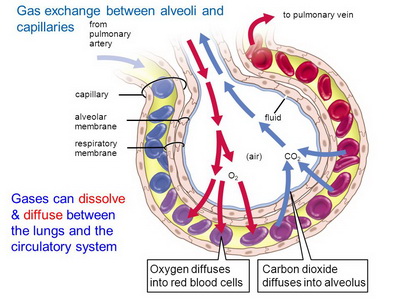

In turn, alveolar PACO2 is influenced by:

=> delayed alveolar emptying with slow rise of expired CO2, leading to failure to obtain a true plateau.Īdditional notes Factors influencing PaCO2 difficulty in obtaining a true end-tidal CO2.Low cardiac output can increase alveolar dead space (increasing West's zone 1)ĭifference between end-tidal CO2 and PaCO2 could also be due to:.infinite V/Q)īasically it is the difference between physiological dead space and anatomical dead space. => Because PaCO2 is usually very close to PCO2 of the perfused alveoli, increased alveolar dead space would lower the end-tidal PCO2 and increase the difference between that and arterial PaCO2.Īlveolar dead space is the part of the inspired gas which passes through the anatomical dead space to mix with gas at the alveolar level, but does not participate in gas exchange. => as the alveolar dead space volume increases, more relatively CO2-free gas mixes in with gases from better perfused units, thus lowering the end-tidal PCO2 The size of this difference is a simple index of the amount of alveolar dead space. In a healthy person breathing room air, the difference between arterial PaCO2 and end-tidal PCO2 is small. Normal PaCO2 = 38.3mmHg +/- 7.5mmHg (95% limits, 2 standard deviation.)ĭifference between arterial PaCO2 and end-tidal PCO2 => Thus by convention, arterial and "ideal" alveolar PCO2 values are taken to be identical. Shunt of 10% will cause an alveolar-arterial PCO2 gradient of about 0.7mmHg. => It is much lower in PCO2 because the CO2-free gas from anatomical dead space dilutes even more. Mixed expired PCO2 is the partial pressure of CO2 in the expired gas during a tidal breath. => It is lower than 'ideal' alveolar PCO2, because the almost CO2-free gas from alveolar dead space dilutes and lower the end-tidal PCO2. => ASSUMED to be representative of alveolar gas What is the end tidal CO2? How does it differ from arterial CO2 tension and the mixed expired CO2 tension? What factors influence its value? (1995)Įnd-tidal PCO2 is the partial pressure of CO2 at the end of expiration during tidal breathing. Briefly describe the potential causes of a difference between measured end-tidal and arterial partial pressure of carbon dioxide (03B11) (96B7)


 0 kommentar(er)
0 kommentar(er)
